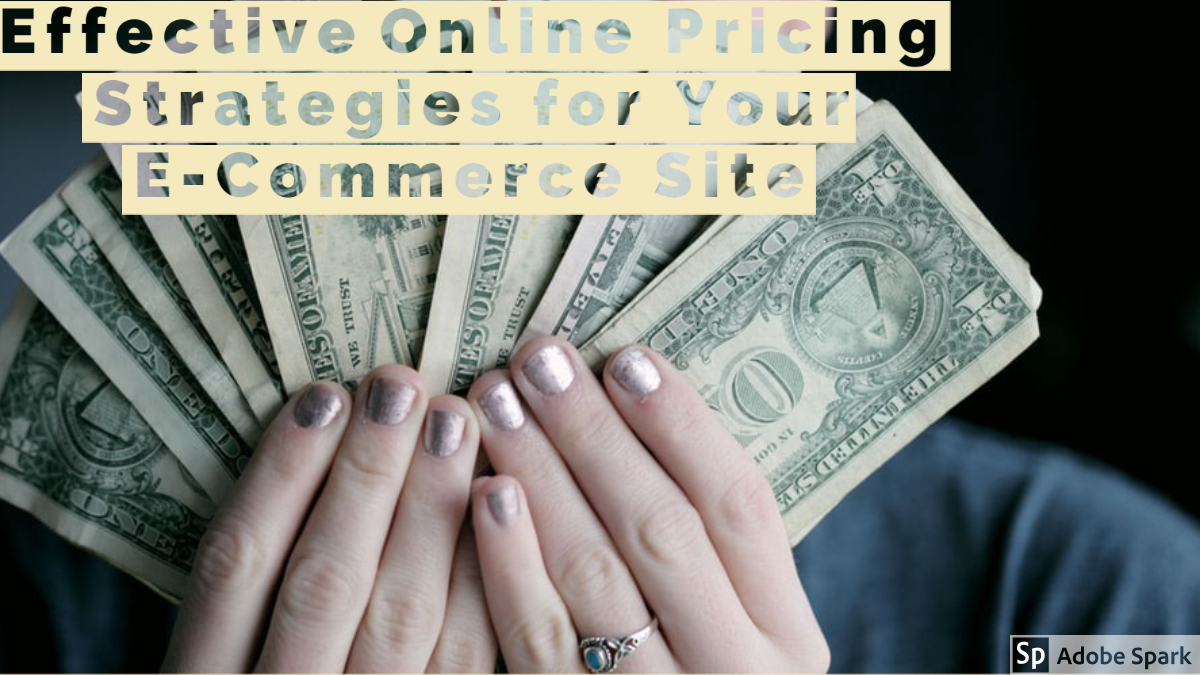Effective Online Pricing Strategies for Your E-Commerce Site

 5mins Read
5mins Read
If there is an influential factor that determines where most online shoppers shop nowadays, it is the Pricing. An extremely important factor cannot and should not be taken for granted.
Consumers shop where they want to nowadays, whether it’s through an app, browsing online, via social media, They also check prices via Google Shopping and price comparison sites like NexTag.
The point here is shoppers are smart so you have to be, too. Utilizing an effective online pricing strategy requires both a test-and-learn mentality paired with an intuitive feel for how you would like your brand and products to be received by your customers.
Whether you are a B2B e-commerce site or a B2C online store, a pricing strategy is an effective driver of growing profits and influencing inventory turnover. This is why we are about to share with you the best of these pricing strategies to help you grow your business.
What is Pricing Strategy?
Before we get started, let us get ourselves acquainted with the definition of Pricing Strategy. Pricing strategy refers to the method companies use to price their products or services. Pricing strategies are marketing tactics, and nailing your pricing is one of the best ways to improve your conversion rate.
Running an online business without a pricing strategy is like running a race without a track. You need to have a pricing strategy in place when you are running an online business so you can make sure that you do not price your products too high, or worse, too low.
Types of Pricing Strategies
Value-Based Pricing
The pricing strategy entails pricing a product or service to appeal to customers over alternative products or competing prices. It takes into account a very deep understanding of customer value. Value-Based Pricing establishes prices for products and services largely on perceived value. This strategy works best for products that have a highly emotional component or that exist in a controlled environment. The cost of production of products, shipping, tariffs, and other expenditures dictates how you price your product and how your competitors price their product. At a very basic level, this strategy depicts the intersection between supply and demand in the marketplace. The pricing should reflect the value that customers feel the whole product and service package is worth, and hence takes into consideration all products in the marketing mix. This model may be best suited for your brand if you:
- have an existing cult-like follower base
- are an established brand known for quality in the marketplace
- sell your product in a controlled environment
Advantages of Value-based Pricing Strategies
- A value-based pricing strategy is fair to both the brand and the customer and this can help you to improve customer loyalty, and when you consider that, it typically costs five times more to acquire new customers than it does to get repeat purchases from existing customers, this is no joke.
- Building a successful brand requires trust, and one of the first steps towards building trust with your buyers is offering your products at a fair price point.
Disadvantages of Value-based Pricing Strategies
- The only real downside to value-based pricing is that sometimes it can be difficult to put a figure to “value”. Ultimately, the value that you provide is only worth as much as people are willing to pay.
Competitive Pricing
This pricing strategy is the practice of setting a price based on what your competition charges for similar goods or services. It results in a narrow gap between cost and profit. When a good or service is offered by many vendors at a relatively similar price, you can charge competitively. For instance, a computer retailer can decide to sell hardware at a loss if they can sell their software or services for a higher margin order to capture the sale and result in a projected positive lifetime customer value.
Advantages of Competition-based Pricing Strategies
- Competition-based pricing strategies are fantastic for making sure that you are selling your products around the market rate.
- Though it takes time and effort, it helps businesses like yours to come up with prices that are fair to you and your customers.
Disadvantages of Competition-based Pricing Strategies
- If you opt to use a competition-based pricing strategy for your business, you need to be careful that you do not enter a “race to the bottom”. This happens when new businesses enter a niche and try to position their brands as the lowest price point.
- It takes a lot of effort, as you will need to sell more products to earn the same amount of profit as your competitors.
Cost-based Pricing
Cost-based pricing is essentially coming up with a price for your products by adding the cost of your products (including shipping costs) and the margin that you want to make from each product.
You will need to factor in the marketing costs into these prices too, otherwise, you will run the chance that you could make sales without actually making any profit. This strategy entails the retailer placing a mark-up on top of the wholesale cost of the product that they paid for. Cost-Based Pricing ensures that you are implementing an ample profit margin at all times.
An example is if it costs you $5 to source products (Female Tops) from your supplier, and $2 to ship the products to your customers. Then you set a cost of $5 more per product for Facebook ads to draw in traffic to your online store and land a possible sale conversion. Therefore, in total, you will spend $12 to source a product, make a sale, and ship it to our customer.
You could try selling the crop top at $15 each, or even $20, and see if you can land the sales – you would be earning a decent profit at both of those prices.
Advantages of Cost-based Pricing Strategies
- Based on its simple nature, it is a good option for beginner entrepreneurs.
- You can create a pricing strategy without in-depth research into your customers, or the market you are operating in.
- If you can land sales with the marketing budget that you have afforded in your pricing strategy, you will be able to rest easy knowing that every sale you land is bringing in a profit, which can be reinvested into your marketing campaigns, and try to bring in even more sales.
Disadvantages of Cost-based Pricing Strategies
- It is business focused and not Customer-focused.
Lead Generation Model
This strategy is the practice of engaging users to actively request additional information online. As pricing is contingent upon terms and conditions stipulated in pre-determined contracts, this strategy ensures that the visitor does take action and click to request information expecting to hear back from a sales representative in regards to product details and pricing terms. Users can adopt this strategy online if they require a portal login for their customized pricing needs.
Advantages Lead Generation Model
- Easy access to procuring information for further follow-up
- Speeding up of Sales
- Easy detection of your target Audience
Disadvantages
- Higher investment cost
We can all agree that a successful online pricing strategy can be a strategic advantage for your e-commerce store. However, it is advisable to weigh the pro and cons of any strategy you want to adopt for your business
Your shoppers are smart, so make smart decisions with your pricing strategies. Always show them that your price reflects the value of your product. Turn them into loyal customers with cheap prices. Use psychological tactics to convince consumers that " their prices are not so high after all". Make sure your offers are constantly imprinted into their subconscious, do all of these things and your sales will increase.
Happy Selling




















 TrustGuard - PCI Security Scanner
TrustGuard - PCI Security Scanner
